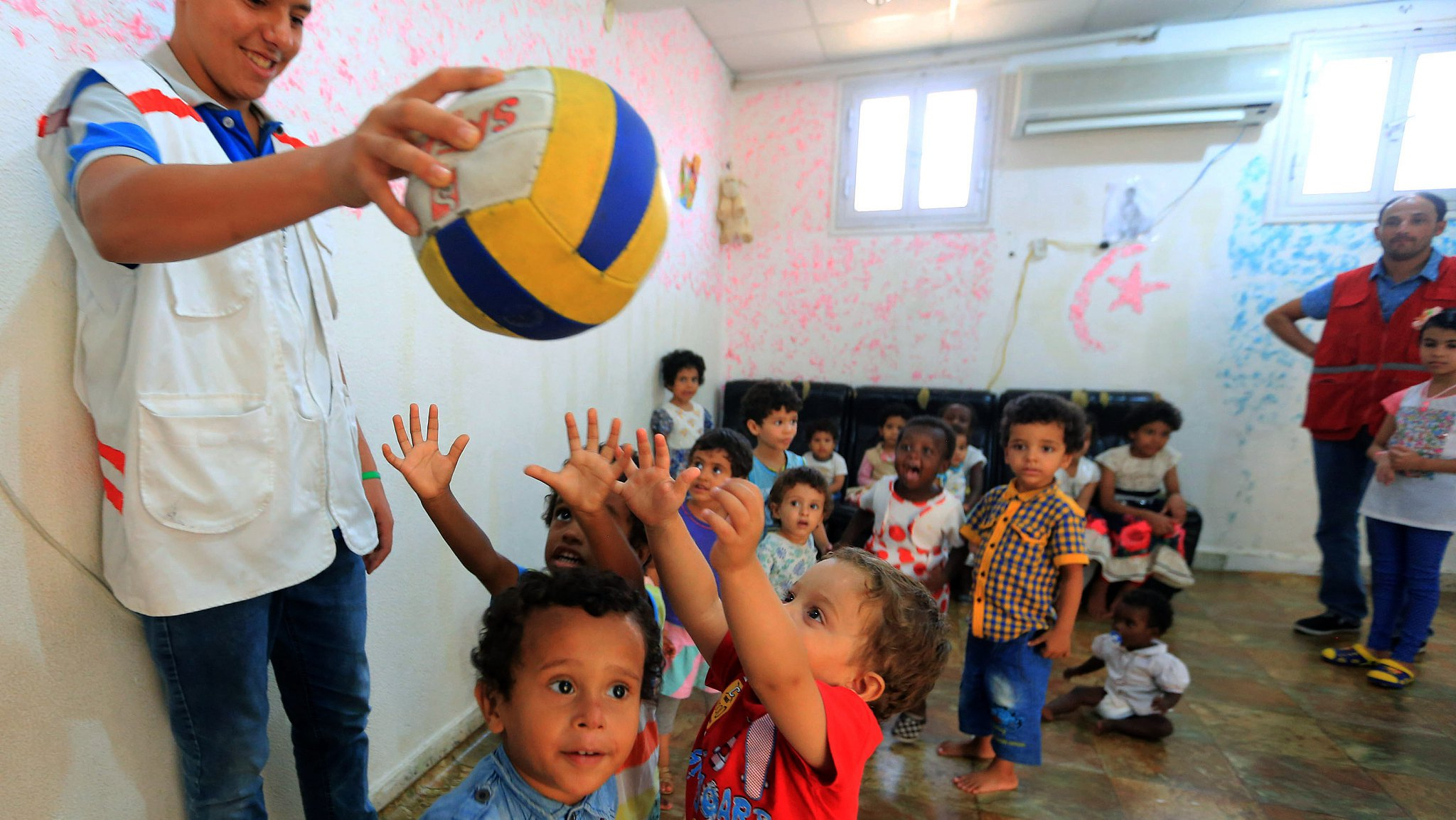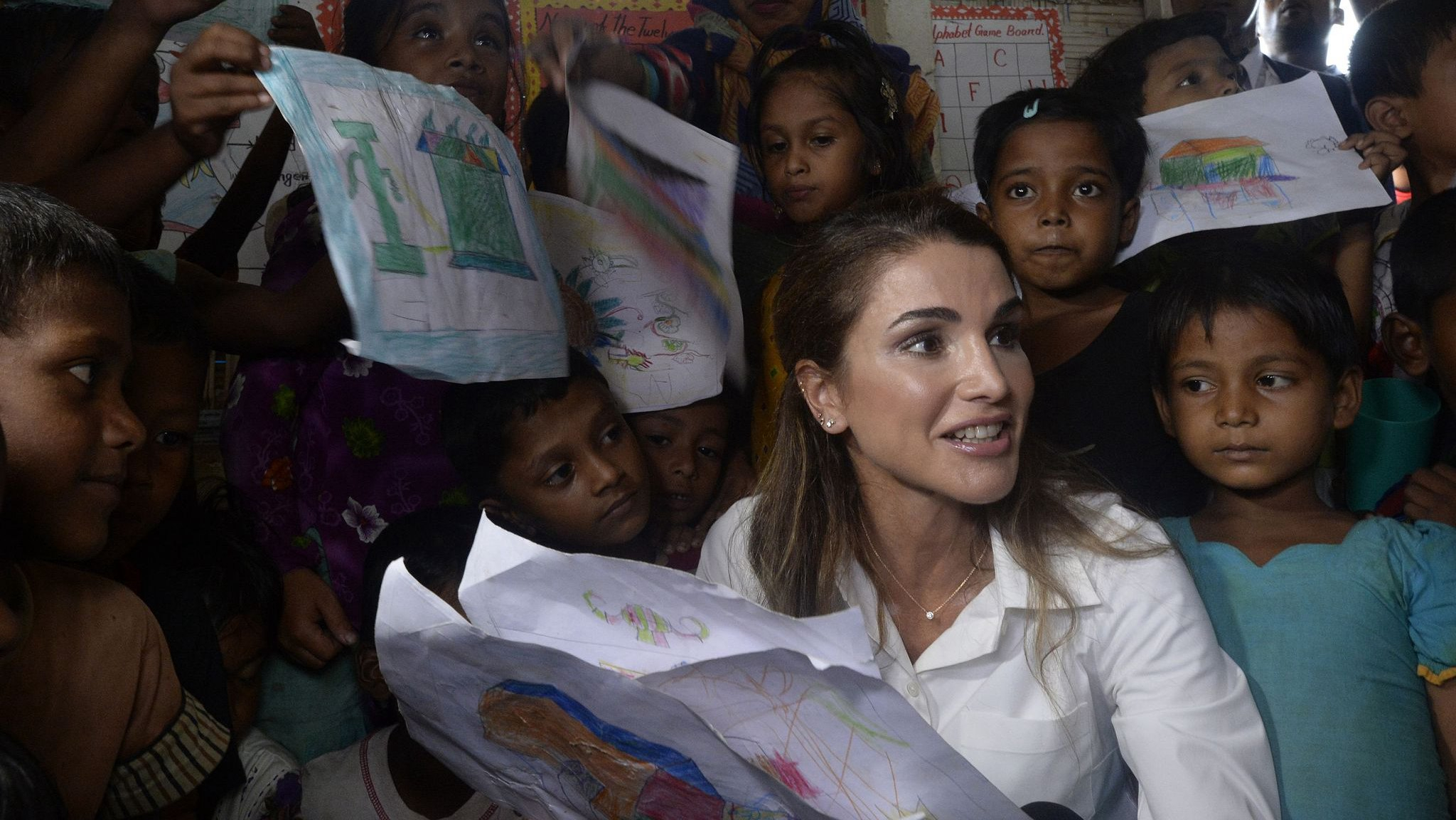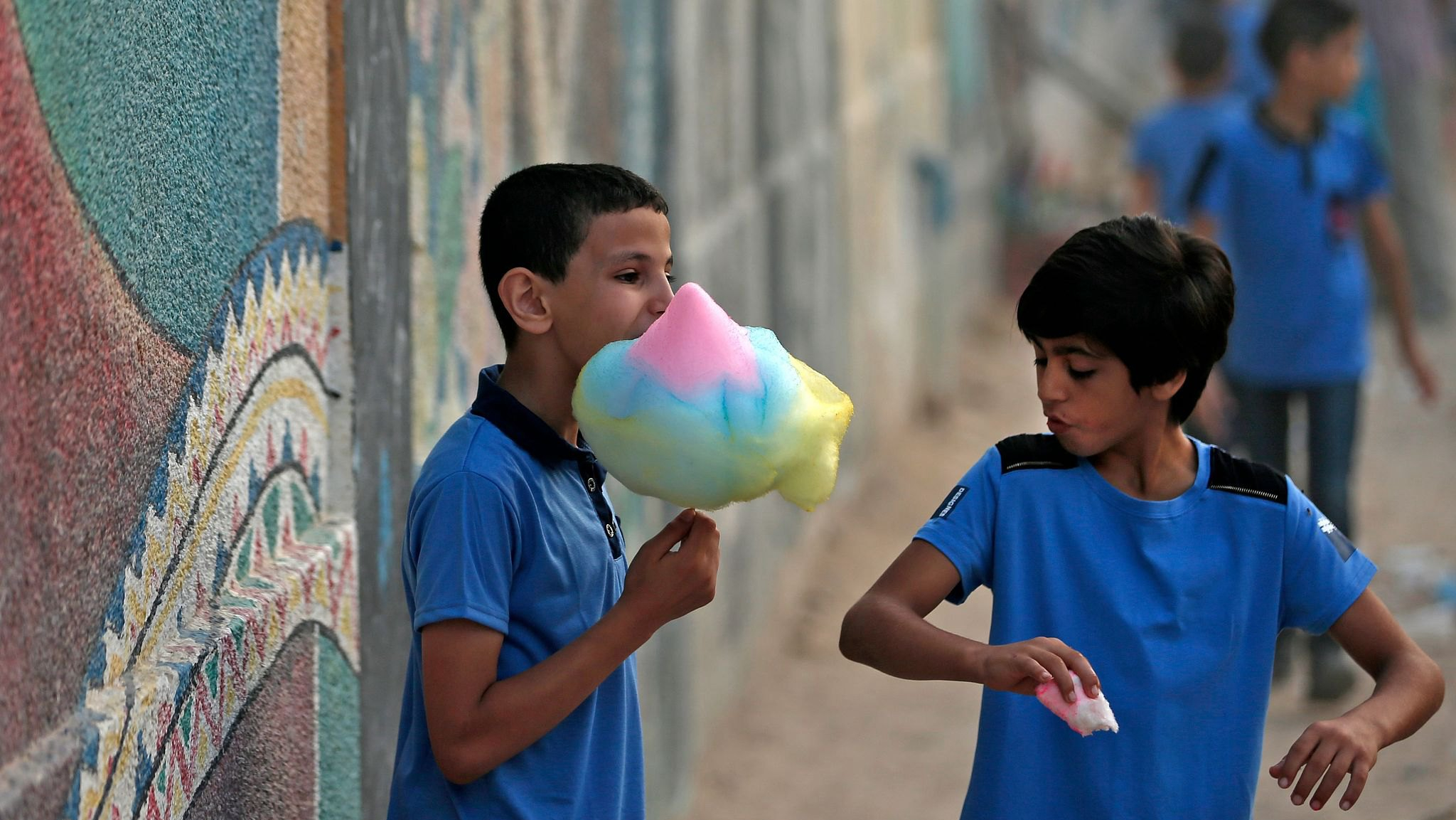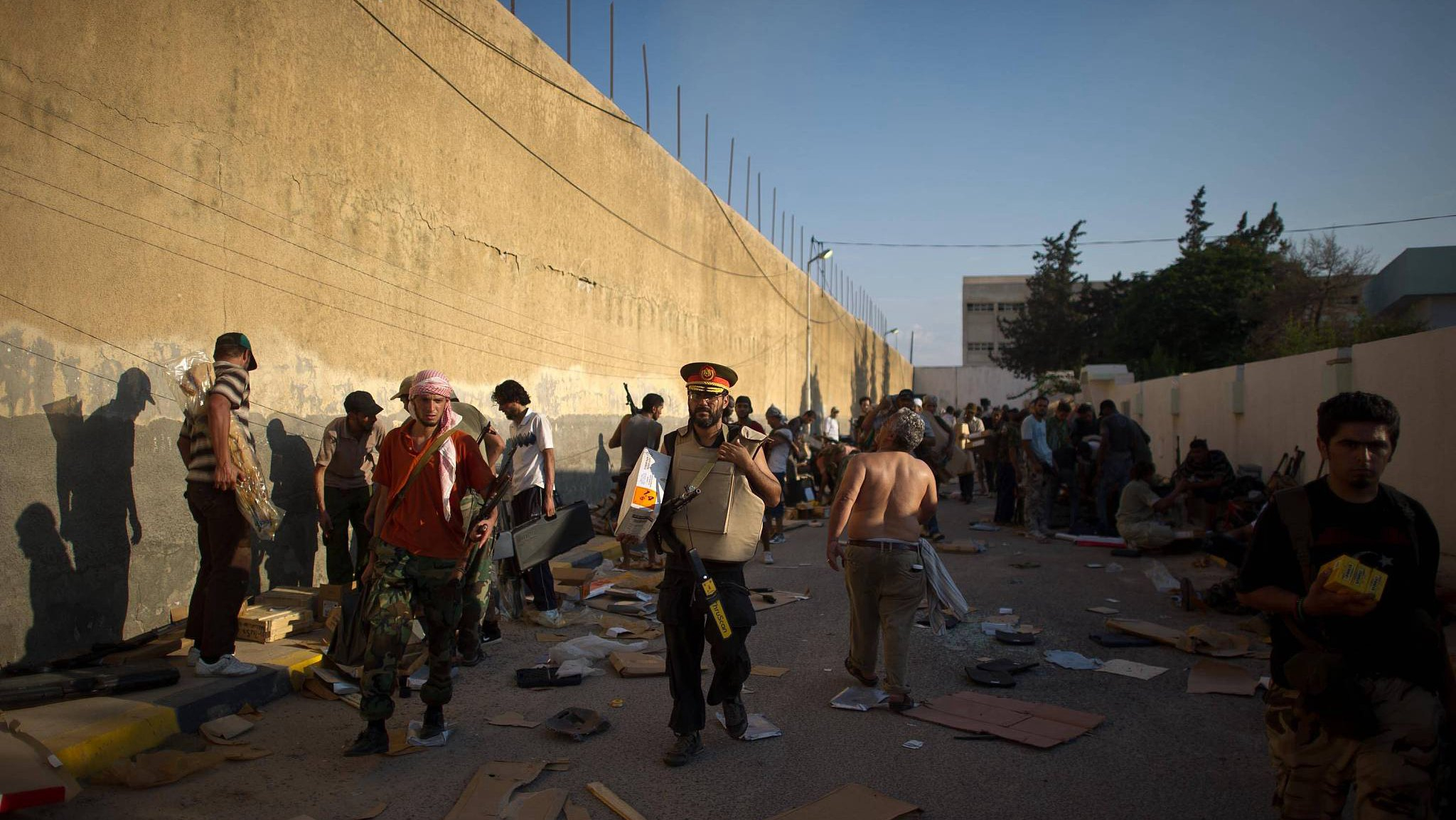
Opinions
18:47, 27-Sep-2018
Opinion: Children deprived by war deserve education, too
Updated
18:35, 30-Sep-2018
By Shantha Bloemen

Editor's note: Shantha Bloemen has worked in international development in Asia and Africa for the past two decades, including in responding to humanitarian emergencies. The article reflects the author's views and not necessarily those of CGTN.
I lived in war-torn Liberia in 1997. At the time I moved there, a decade of civil war had decimated the public education system. The fighting had left schools damaged and some shut down.
Teachers who had been forced to flee their classrooms were living in displaced-persons' camps, dependent on hand-outs. Worst of all, the war deprived tens of thousands of children of their right to an education.

Jordan's Queen Rania sits with Rohingya children inside a temporary school run by the United Nations Children's Fund (UNICEF) in Ukhia on October 23, 2017. /VCG Photo.
Jordan's Queen Rania sits with Rohingya children inside a temporary school run by the United Nations Children's Fund (UNICEF) in Ukhia on October 23, 2017. /VCG Photo.
Just after I arrived to work with the United Nations Children's Fund (UNICEF), the warring factions signed an agreement that would lead to a period of disarmament, demobilization and reintegration.
The immediate challenge was to help the thousands of children who had been forced to fight. After giving up their guns, these children were taken to centers run by NGOs we hoped could address their psychological trauma as well as trace and reunify them with their family and ultimately get them back into school.
Many of those boys had been out of school for years. They were desperate to go back, yet dreaded returning to a classroom with much younger children. An alternative education was proposed: Practical courses in mechanics and carpentry along with literacy and numeracy allowed them to catch up without the constant reminder and humiliation of what they had missed.
Now, more than 20 years later, while world leaders have committed to the 2030 Agenda for Sustainable Development and the 17 Sustainable Development Goals (SDG), the fourth of which calls on all governments to "ensure inclusive and equitable quality education and promote lifelong learning opportunities for all," armed conflict continues to deprive too many young people of their right to an education.
A recent UNICEF report, A Future Stolen, reveals that millions of children, especially adolescents, are still being denied the opportunity to learn and are failing to be equipped with the skills they need to transition to adulthood.

Pupils eat candy floss in front of a school run by the United Nations Agency for Palestinian Refugees (UNRWA) in Gaza City on August 29, 2018. /VCG Photo.
Pupils eat candy floss in front of a school run by the United Nations Agency for Palestinian Refugees (UNRWA) in Gaza City on August 29, 2018. /VCG Photo.
While primary school enrollment is universal in many countries, the world is divided. The report's findings highlight how cruel that division can be in a country affected by armed conflict and natural disasters.
An estimated 104 million young people live in such a country, amounting to nearly one in three of all out-of-school children aged 5-17 years. More than half of all out-of-primary-school children live in a country affected by an emergency situation.
The report makes clear that it is not just the number of children deprived of an education. The quality of education has been so weakened that many adolescents will never finish primary school or even enter high school.
The causes of conflict are typically complex and the consequences of intergenerational. Yet, as the report points out, with only a mere four percent of humanitarian funding going toward education, the lack of investment illustrates a lack of commitment to long-term stability and peace-building.
Expecting a 15-year-old combatant to return to a third-grade classroom is neither realistic nor conducive to their success. Countries that have experienced long civil wars, especially where child soldiers became standard practice, need to both integrate all affected children into civil society, including school and offer them ways to become productive adults.
Rebuilding classrooms, training and paying teachers, removing tuition fees and education levies and creating new models of learning, especially for older children, are urgently needed for any peace agreement to last.

Rebel fighters from Jebel Nefoussa and Misurata entered Gaddafi headquarters on August 23, 2011. /VCG Photo.
Rebel fighters from Jebel Nefoussa and Misurata entered Gaddafi headquarters on August 23, 2011. /VCG Photo.
Investing in children's education is well documented as one of the best investments in any society, including governments, and can make in their national well-being.
From rich countries, where taxes form the basis of public education systems, to sacrifices made by poor parents to pay school fees in the most difficult of circumstances, the common consensus is that education is the path for equalizing opportunity and shepherding future prosperity.
A complacency to invest in education is creeping into the global ethos. As the UNICEF report emphasizes, the gap between available funding and the three trillion US dollars needed per year in low- and middle-income countries to achieve the SDG for quality education for all by the 2030 deadline amounts to 1.8 trillion US dollars.
As the world becomes more globally interwoven, digitally connected and led by the mantra of lifelong learning, the prospect of millions of children being left illiterate illustrates the danger of the divides in access to quality education.
We have plenty of evidence to demonstrate the return on investment. We have goals, targets and ways to measure. We know that a safer future requires investment in teachers, improving the quality and relevance of education and expanding school access to all children now. What are we waiting for?
(If you want to contribute and have specific expertise, please contact us at opinions@cgtn.com.)

SITEMAP
Copyright © 2018 CGTN. Beijing ICP prepared NO.16065310-3
Copyright © 2018 CGTN. Beijing ICP prepared NO.16065310-3